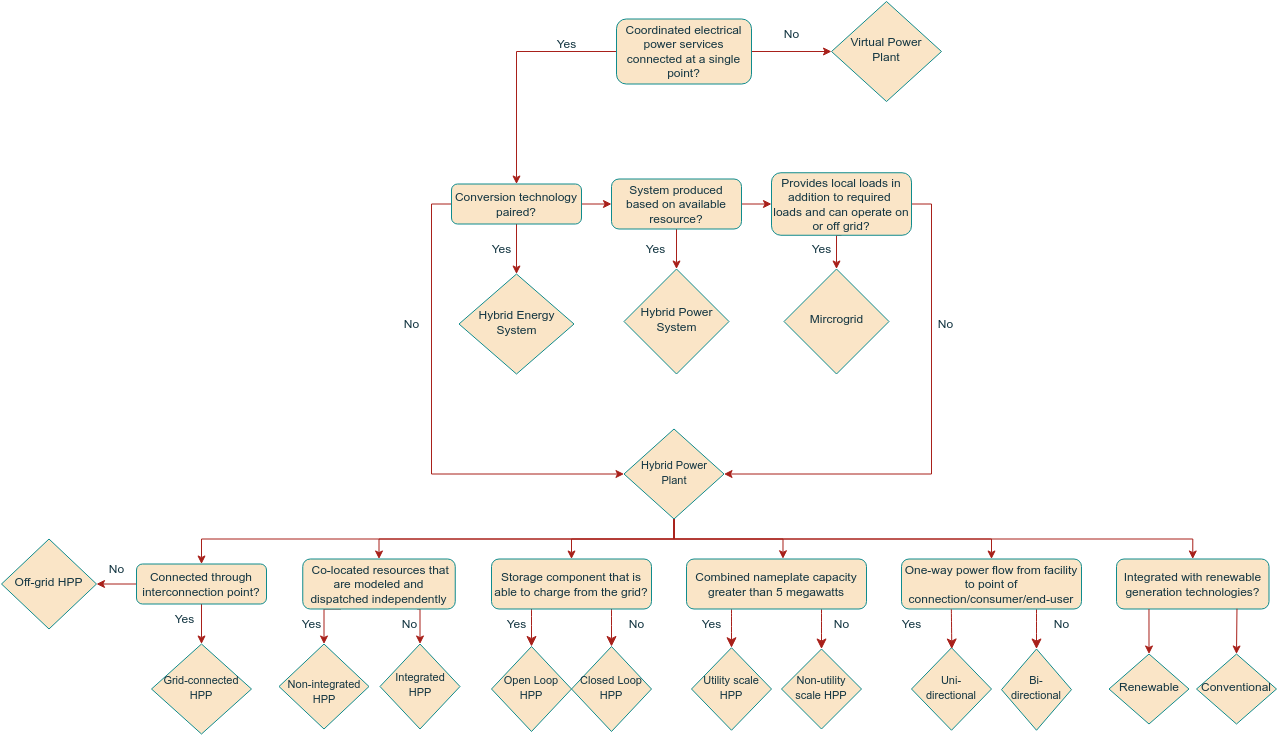IEA Task 50
Work Package 1
Collection of research results, state-of-the-art and expert consensus.
This work will seek to collect, organize, and distribute the state-of-the-art in hybrid power plants. This includes developments in research, field trials, and commercial activities. The work package will additionally collect and report on the expert consensus on hybrid power plants, through repeated expert
elicitation. The top overall goal will be to identify both the state-of-the-art, in research and in practice, and through expert consensus, an identification of best practices and areas in need of research and development. Task Manager: Matthew Kotarbinski, NREL.
Activites
• Development of hybrid power plant terminology – Hybrid power plant terminology is not used consistently across the research and industrial communities. The first portion of work will seek to coordinate preferred language to develop consistent terms across the field.
• Development of database or research results and algorithms – An online database will be developed to collect, organize, and disseminate state of the art results in hybrid power plants. The database will be updated regularly and provide an ongoing picture of the current state of the art in hybrid power plants.
• Expert elicitation – Several surveys of experts across research and industry will be carried out to develop consensus on what is current best practice in wind farm control, what are the barriers to wide adoption, and what research is needed.
• Recommendations and best practices – Based on the analysis of state of the art and expert elicitation, a set of recommendations and a best practice for increasing commercial viability of hybrid power plant, hybrid power plant design, operation, and deployment will be developed.
• Workshops – In support of all the above activities, workshops will be arranged for discussion and dissemination of recent research.
Please contact the Task Manager below with any questions:
Sub Definitions
A hybrid power plant is a combination of two or more independent electricity generation and/or storage technologies providing coordinated electrical power services that are connected at a single point.
| Term | Definition |
|---|---|
| Off-grid HPP | An HPP that is not connected to the electricity transmission network through an interconnection point |
| Grid-connected HPP | An HPP that is connected to the electricity transmission network through an interconnection point, and complies with the grid code rules set out by the transmission system operator |
| Co-located HPP | An HPP where the constituent resources share a single point of interconnection |
| Non-integrated HPP | A co-located set of resources that are modeled and dispatched independently |
| Integrated HPP | An HPP that is modeled and dispatched as a single resource |
| Open loop HPP | An HPP with a storage component that is able to charge from the grid |
| Closed loop HPP | An HPP with a storage component that is not able to charge from the grid |
| Conversion HPP | An HPP where the electricity output is used to produce another product such as hydrogen, ammonia or freshwater |
| Utility scale HPP | An HPP with a combined nameplate capacity of greater than 5 megawatts |
| Non-utility scale HPP | An HPP with a combined nameplate capacity of less than 5 megawatts |
| Behind the meter HPP | An HPP linked to the distribution network through a customer side meter that is primarily used to directly supply end-users without going through grid connections |
| Distribution HPP | A grid connected HPP that is located close to end users and transmits power to them through the local distribution network |
| Unidirectional | One-way power flow from facility to point of connection/consumer/end-user |
| Bi-directional | Two-way power flow from point of connection |
| Renewable | An HPP that is integrated with renewable generation technologies |
| Conventional | An HPP that is integrated with conventional, non-renewable generation technologies |
| Single owner | Ownership by a single entity or individual for the entire HPP |
| Multiple owner | Mixed ownership of the whole plant. One owner may have control over generation, while another may own the storage component. Ownership goals may differ, affecting decisions related to revenue generation and risk management. |
| Multiple legal entities | Involves more than one legal entity behind a single connection point. |




